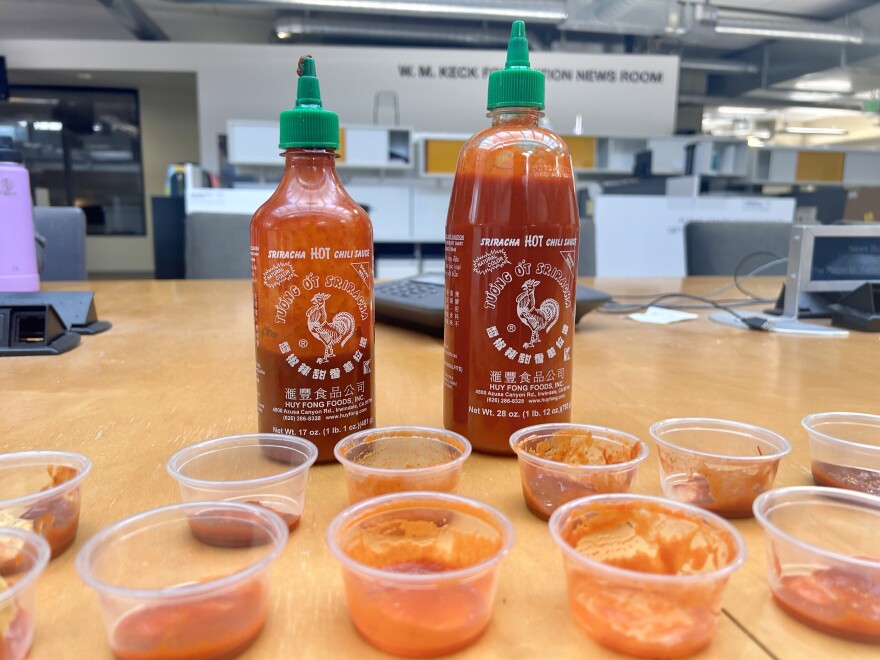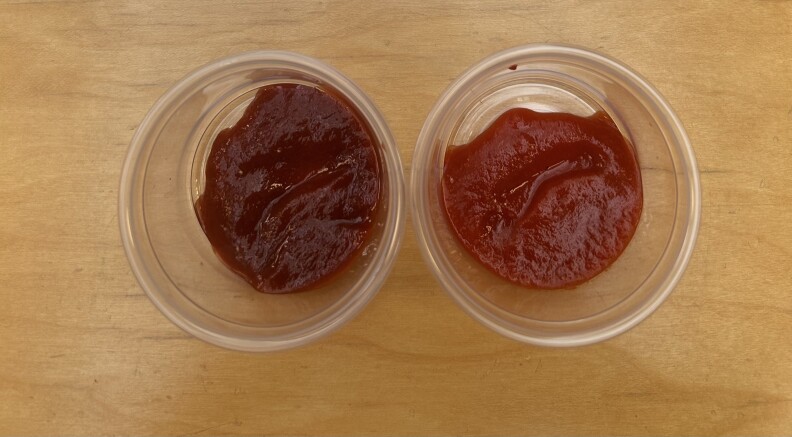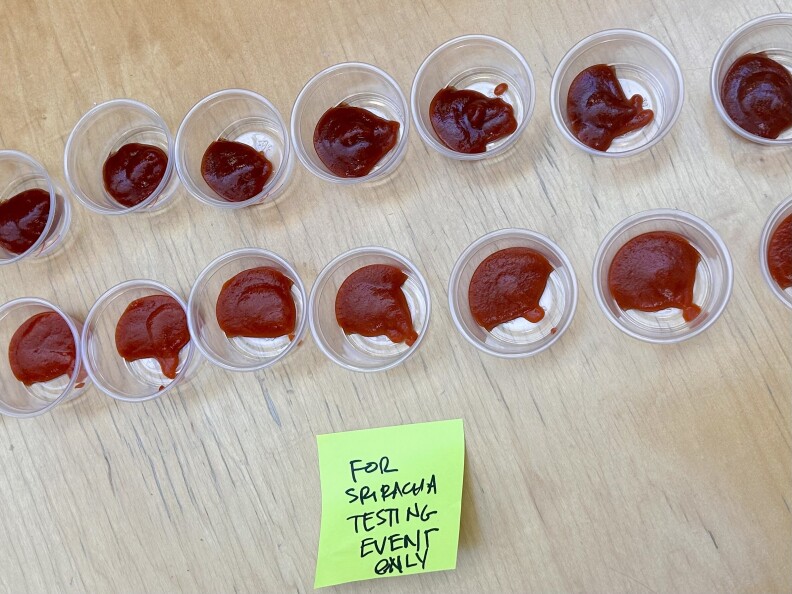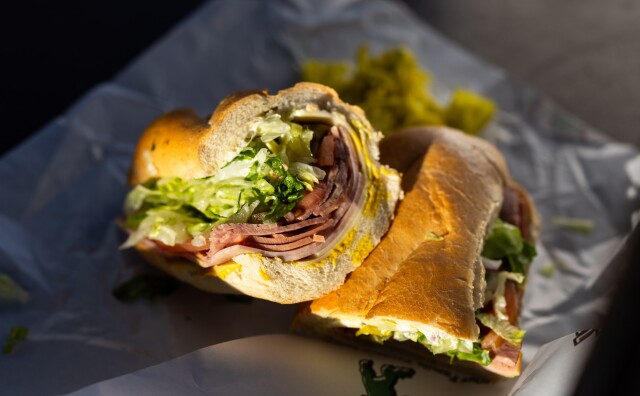Does Sriracha Taste Different After The Shortage? We Put It To The Test — And Learned Proper Storage Etiquette In The Process

Now that the anxiety-inducing Sriracha shortage is over, and the bottles are back on the shelves, we’ve been noticing fans of the famous red chili sauce expressing concerns online. They say there’s a difference in taste between the pre-shortage bottles, and the bottles that are now on the shelves.

Some say it doesn’t have as full of a flavor, has a slightly stale aftertaste, and just doesn’t seem like the Sriracha they know and love.
We, as hungry journalists (and not food scientists, keep this in mind… for later), and hometown stans of the pride of Irwindale, wanted to take the people’s words and put them to the test.
So, we bought a new bottle of the sauce, and borrowed a bottle that had been sitting in our colleague Briana Lee’s fridge since the before times.
For our taste test, we wanted to answer the question — do current Sriracha and pre-shortage Sriracha taste different?
Sriracha taste test materials
We poured each of the sauces into a row of clear disposable condiment cups and hid the bottles from the eight LAist colleagues who volunteered for the taste test, including the author.
We also brought a bag of organic yellow corn tortilla chip rounds from Trader Joes that the participants could use to taste the sauces or cleanse their palates in between.
Once all of the participants gathered around the taste test table in the LAist newsroom, we gave everyone one cup of each of the sauces.

When everyone was set up, we asked them to take their first taste of the sauce on their right. That was current-day Sriracha.
Current-day Sriracha
“It’s not spicy,” said editorial intern Anne To immediately after taking a bite.
Others said it tasted light, sweet, and more “ketchupy.”
“I’m really surprised, I feel like it really doesn’t taste like what I remember Sriracha to taste like,” said engagement producer Stephanie Ritoper.
Editor Karina Gacad felt like she had to keep trying the sauce (or maybe she was very hungry — it was lunchtime). She said this version tasted more like Sriracha the more bites she took.
“Just keep eating more of it,” Gacad added.
Pre-shortage Sriracha
After the first sauce was sampled, we asked everyone to take a sip of water or eat more tortilla chips to get the taste out of their mouths.
Once our palates were clear, the participants took their first taste of the sauce on the left. That was the pre-shortage Sriracha.
The group had a visceral reaction.
“What did I just put in my mouth?” said managing editor Jason Wells. “This is not even close to the first one.”
“Now I’m super confused… this definitely does not taste like Sriracha," said senior reporter Elly Yu.
“It is significantly spicier than the first one," added the author.
“I feel like I’m being pranked right now,” Wells said.
The group also pointed out the difference in the color of the sauces. The pre-shortage sauce was closer to a deep burgundy while the post-shortage version seemed much more red.
What was going on?
It was then we realized we had a problem. We hadn’t been as rigorous in our methodology as we should have been — as I said, we’re journalists, not food scientists after all.
While the current-day bottle had been sealed before we used it, the pre-shortage bottle had not. It had been opened and sitting in Brianna's fridge for, it turned out, two years. Ahem.
The fact that it had been opened for so long had clearly changed the flavor. We realized we were no longer comparing like with like, so in the spirit of fairness, we declared the taste test null and void (much to our disappointment).
But we were still left pondering — what exactly had happened to the open Sriracha bottle while it had been in the fridge? How had the taste been affected?
So we asked Bryan Le, a food scientist from Pacific Lutheran University.
Sauce storage 101
Le said because the bottle had been opened and the seal broken, it had allowed oxygen to enter, which creates a lot of challenges.
Once you open it, then microorganisms can come and grow. They don’t grow very fast, but the products that they produce do produce interesting off flavors.
Le said the good thing about Sriracha and most other hot sauces is that they have a lot of vinegar in them, and they are also pre-fermented, which helps them hold off a lot of spoilage and pathogens.
However, he said there are some very resistant microorganisms that can survive in these really acidic conditions, which often produce savory notes that can come across as off-putting.
“If you've got something that's already opened, there's not a huge concern in terms of food safety, but you've got all these chemical reactions occurring and these fermentation processes occurring as well,” Le added.
Once a bottle has been opened, Le said after about six months is when you might start to notice flavor defects (reminder: ours had been open 4x longer than that).
Overall thoughts

It shouldn’t come as a surprise that almost everyone in the taste test was able to correctly identify the old sauce and the new sauce because of the noticeable differences in color and taste.
But the most interesting finding in all of this — coming out of the test, no one could quite remember what the sauce actually tasted like originally.
The test plunged a few people into an almost existential crisis at the table in the middle of the newsroom as they wondered to themselves – what is “real Sriracha” anyway?
Company’s stance on the sauce
We spoke to Huy Fong Foods, the company behind the sauce. It turns out that there may be no "real Sriracha" after all.
While it insisted in a statement that the recipe doesn’t change, the company did say the taste may vary with every batch.
“We would like to note that because we use fresh chili peppers in all our sauces from various sources, there will occasionally be variations on our final products depending on the chili harvest time and place it was harvested,” the statement added. “Some batches can vary in color, level of spiciness and even consistency.”
So, dear internet, you all may be right. Or wrong. Who knows. Just don't ask us to run a double-blind clinical test at any point in the near future.
-
From tortas to tuna melts, all sandwiches tell a unique story as they celebrate Los Angeles' diverse tapestry of flavors with each bite.
-
The company behind Sriracha told us production has resumed.
-
Dustin Bartz has figured out a way to sell a $6 smashburger — and still make a tidy profit. He enjoys trolling competitors who charge more.
-
Two amateur bakers take on a beloved, almost sacrosanct school treasure.
-
For Jeff Alulis, the Burger Quest became “something bigger” than him.
-
Ms. Donut is closing its door the last week of August.










